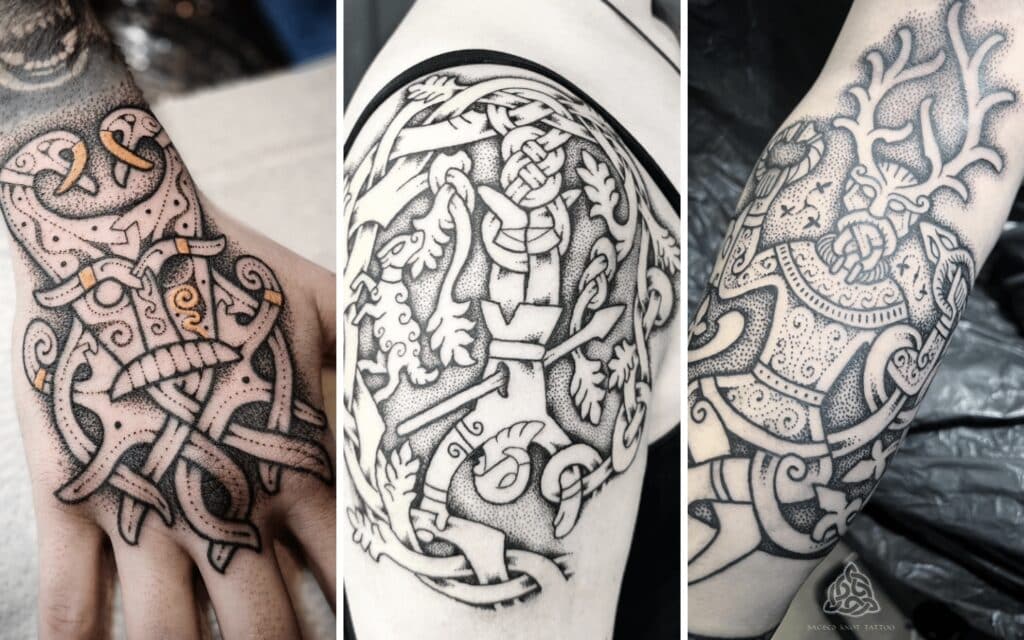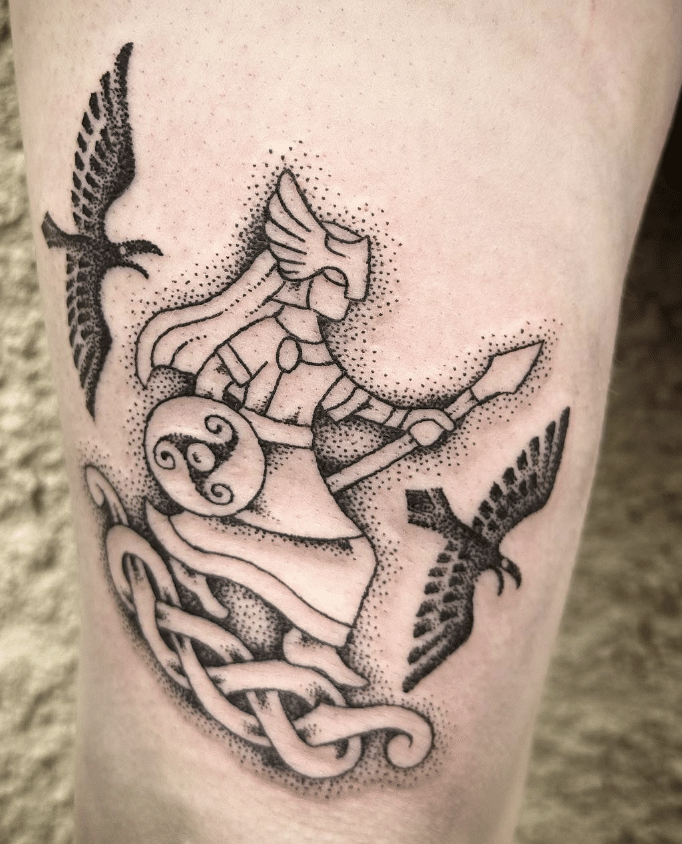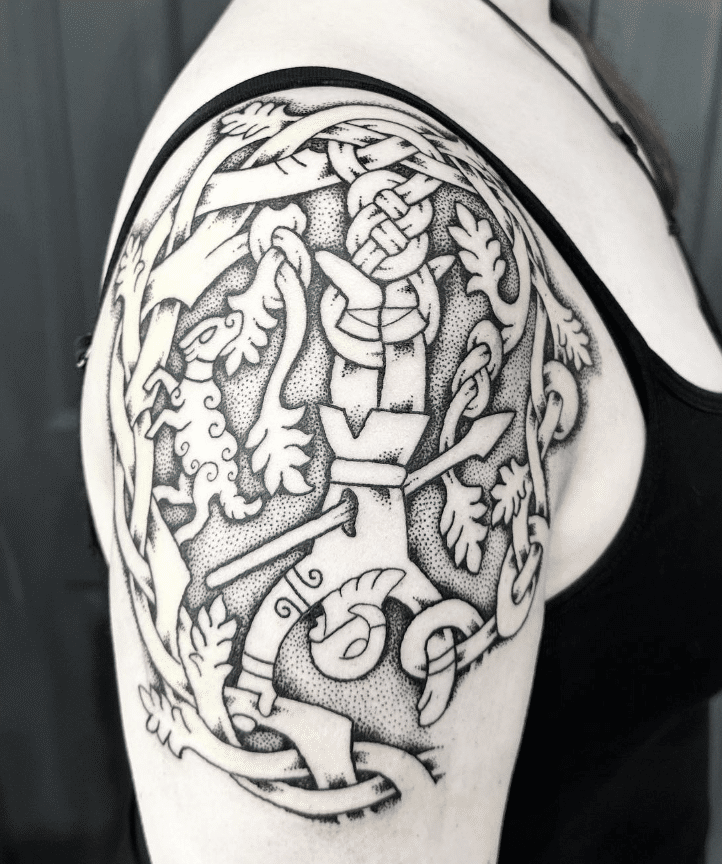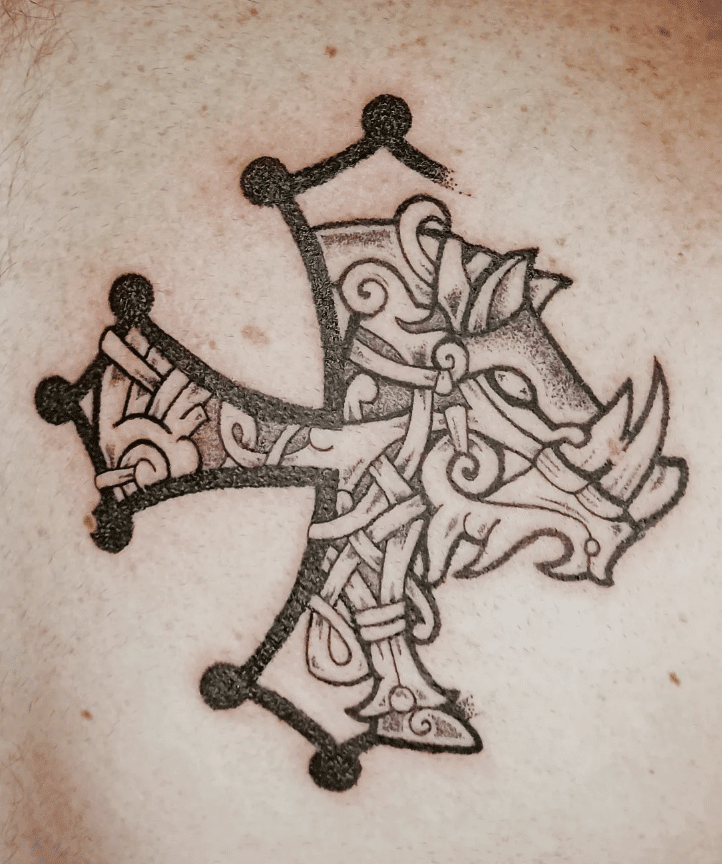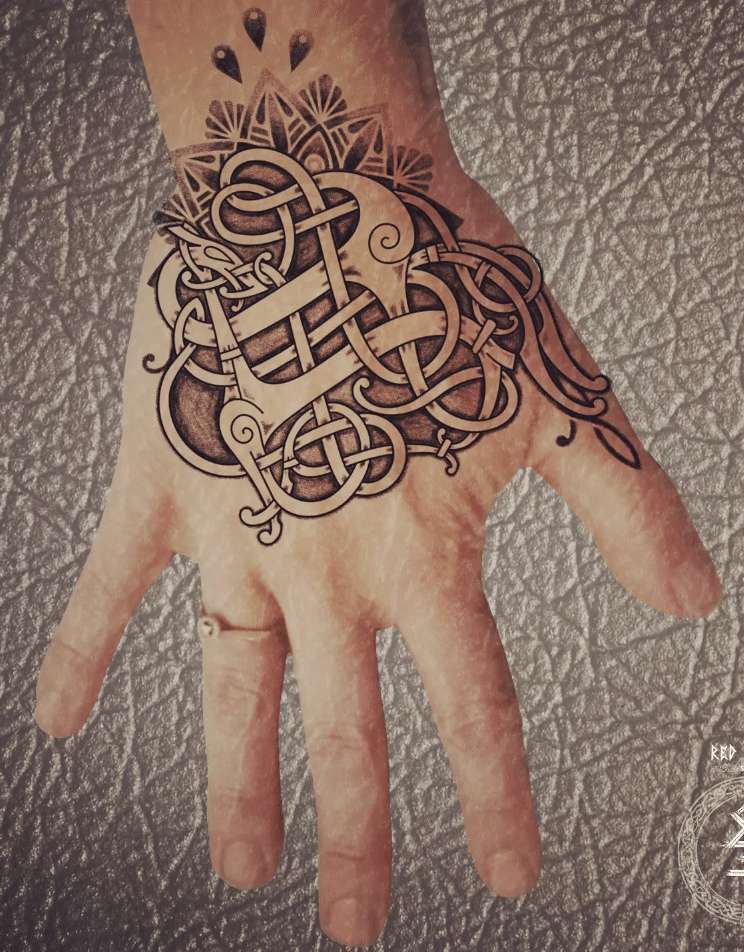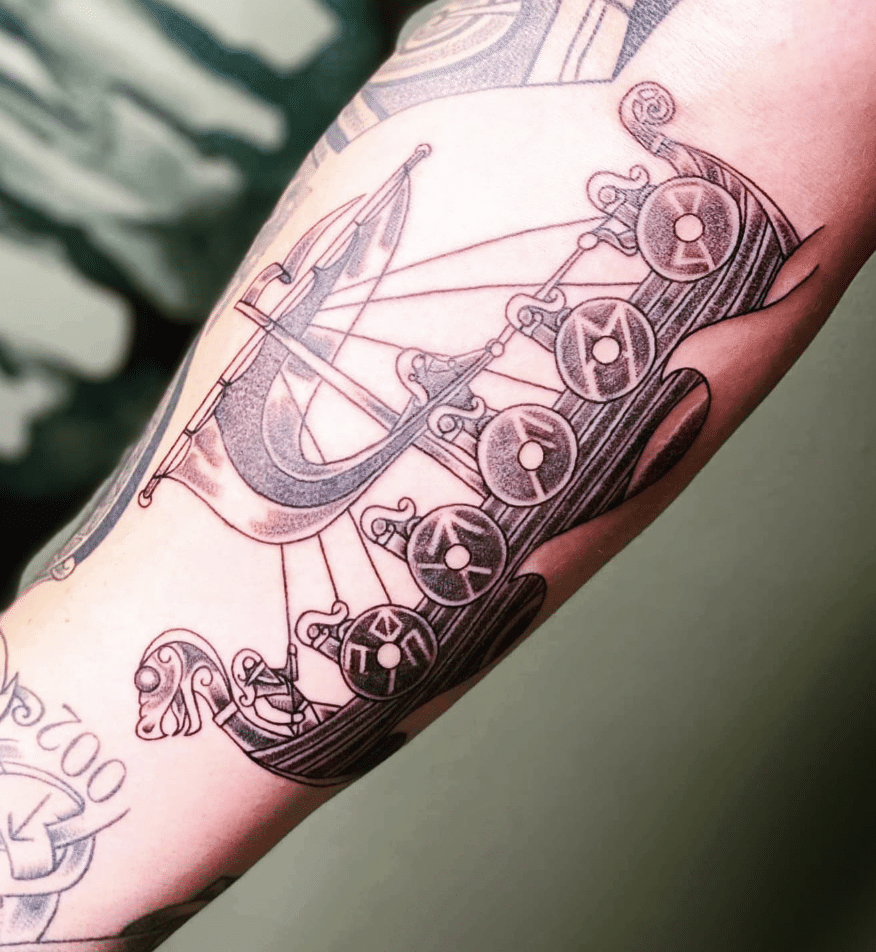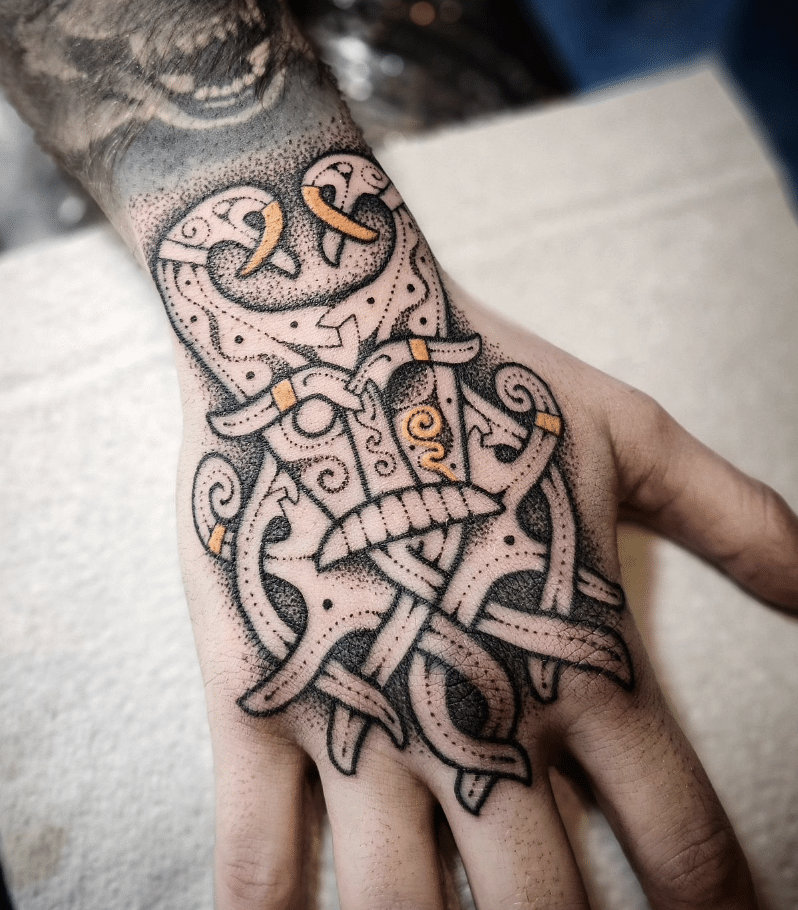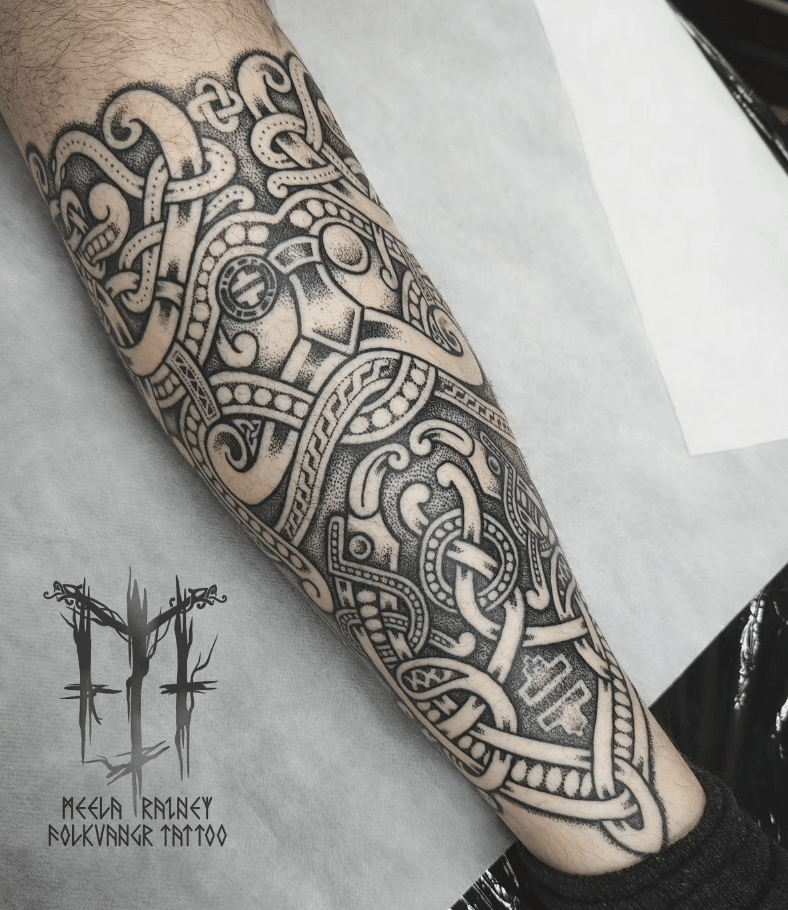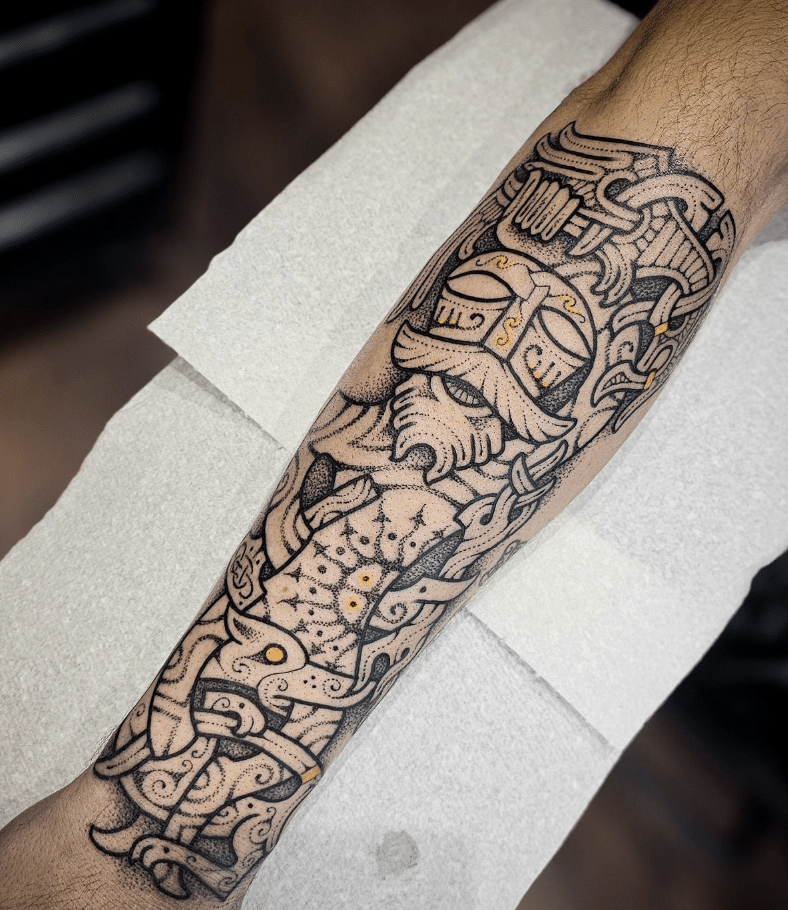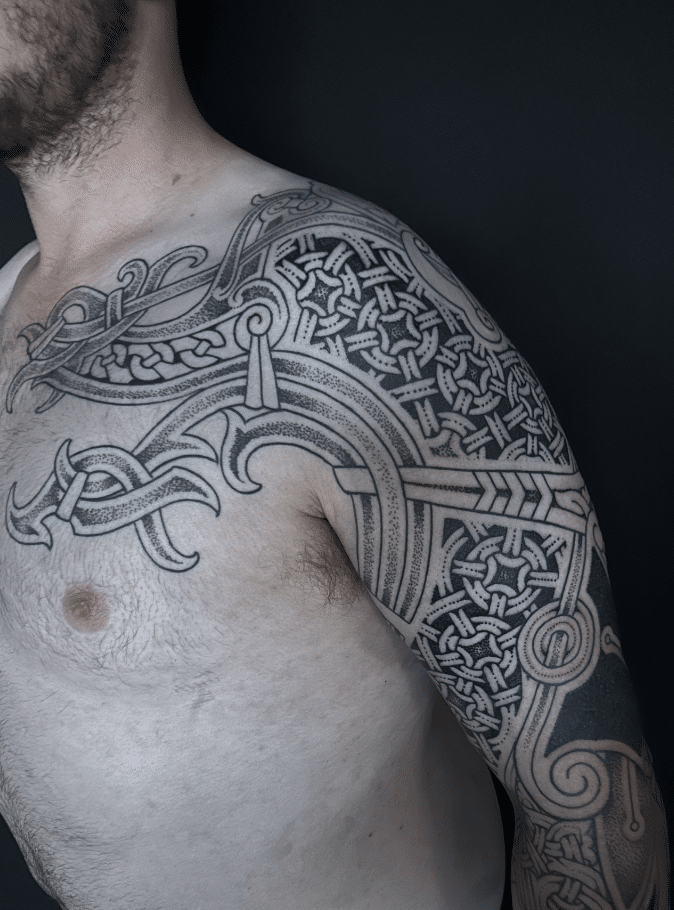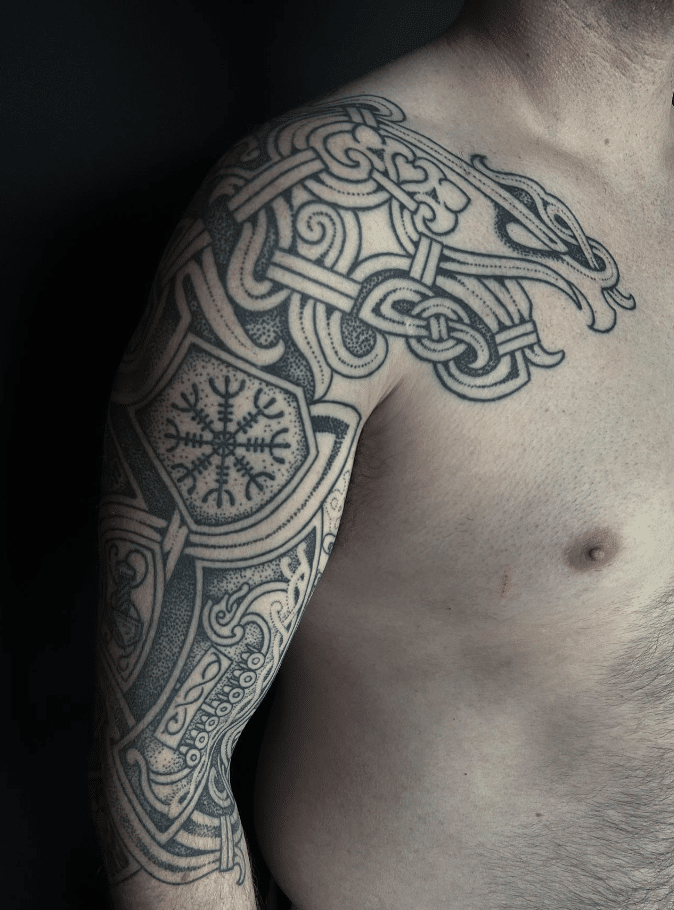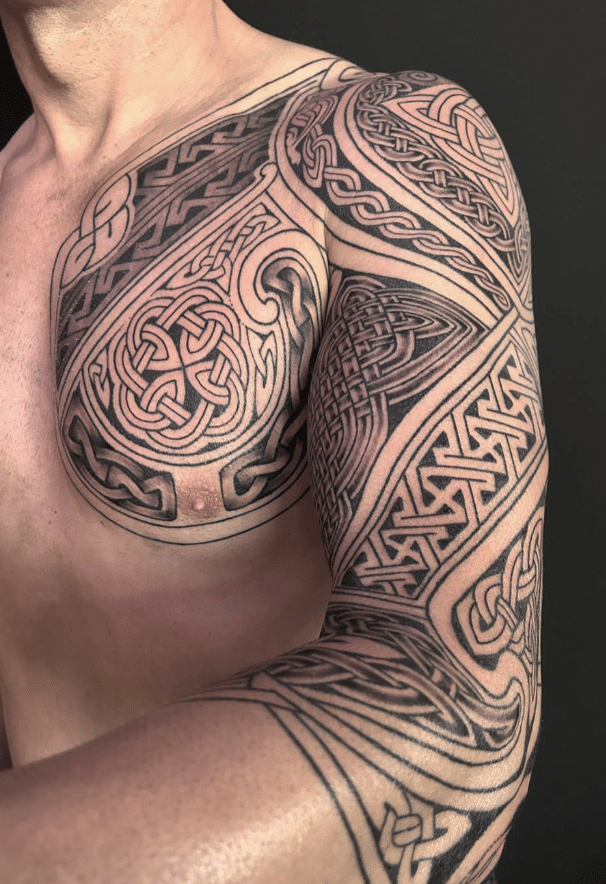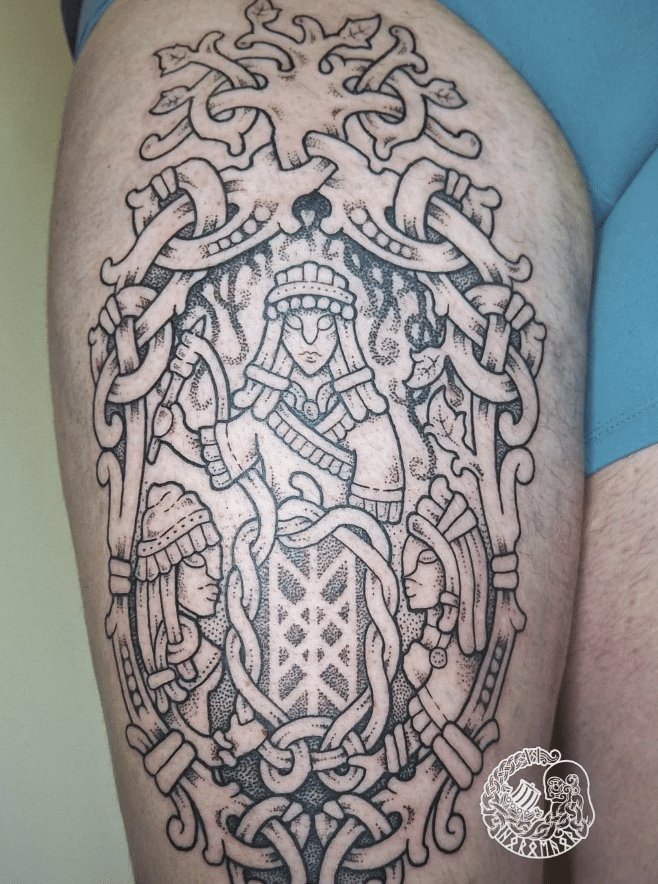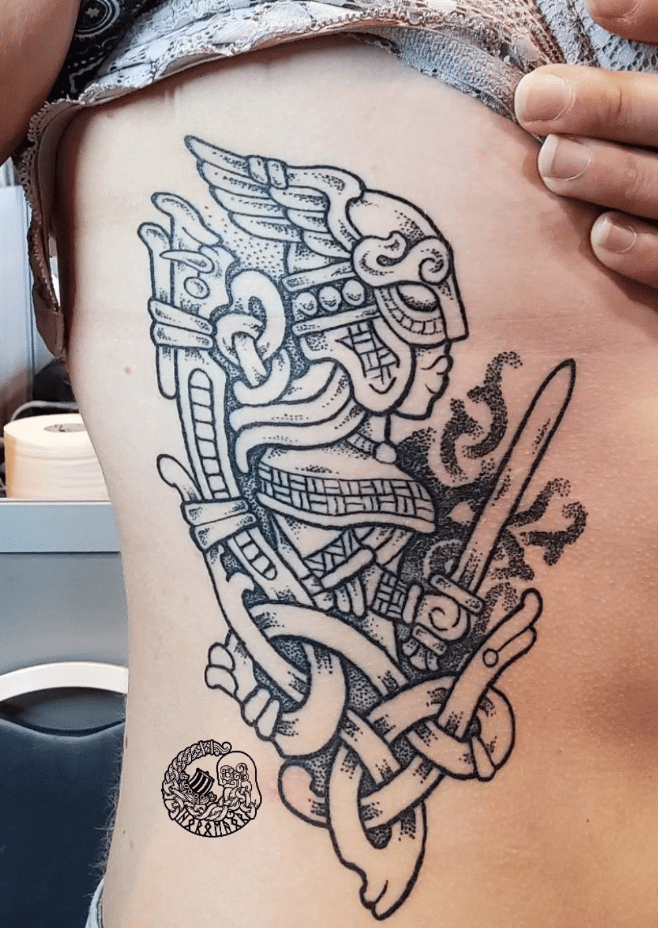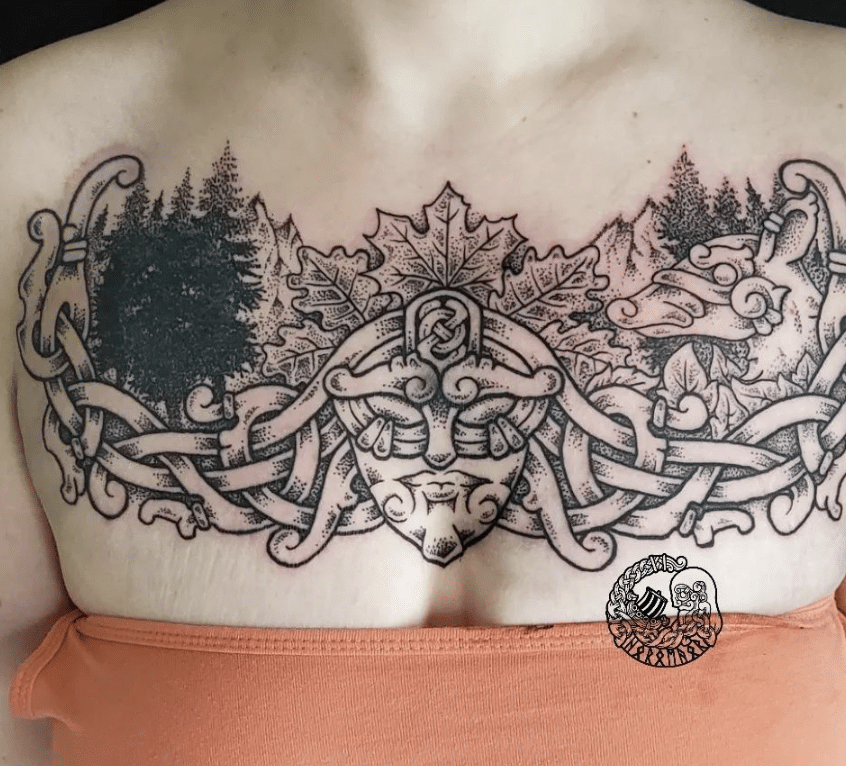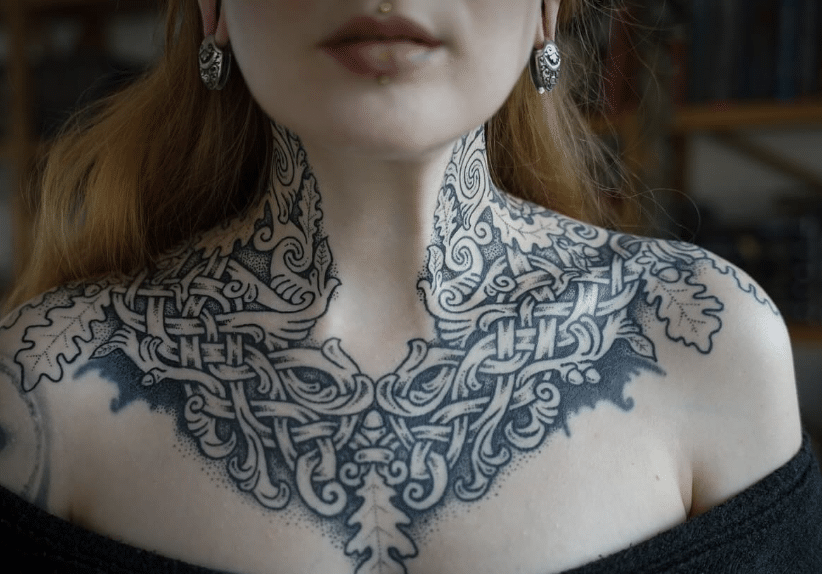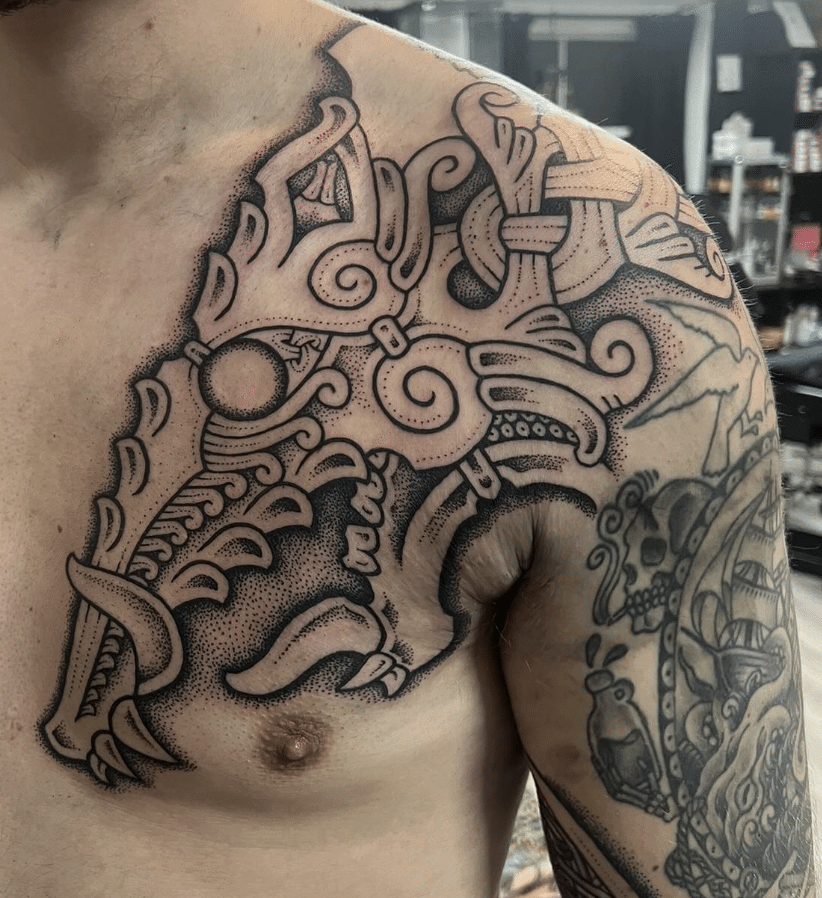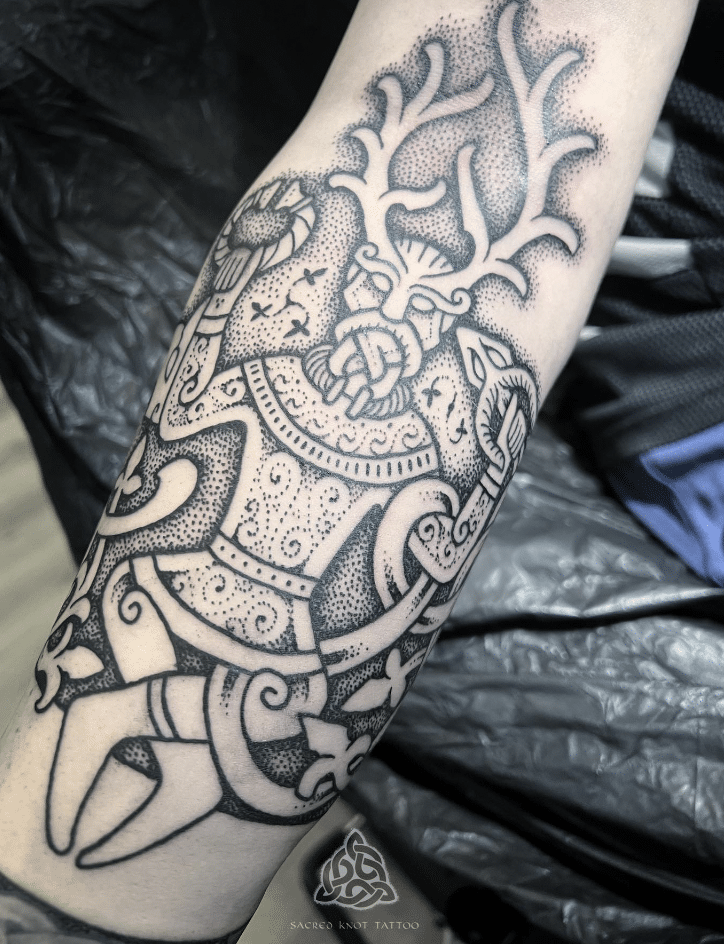In recent years, Celtic and Viking Tattoos have been growing in popularity.
Celtic tattoos began to rise significantly in the 1970s and 1980s as a way to help preserve Celtic culture, while Viking tattoos have grown in popularity more recently, particularly in the last few decades, thanks largely to popular culture influences, such as films, television series, and books that explore Norse mythology and Viking history.
History Of Celtic Tattoos
The ancient Celts were a warrior race who tattooed their bodies and dyed their hair in bright colors from flower pastes to intimate their opponents in battle.
This tactic was likely inspired by the Picts another race of Celtic people from Middle Ages Scotland.
Celtic Tattoos weren’t like the known Celtic designs you might know of with intricate loop or knotwork found in their metalwork, stoneworks, and manuscripts, but rather a more Tribal Tattoo Design.
The Celts made their Tattoos by harvesting the Woad plant. The plant would first be dried out, then boiled, strained, and boiled again to create a blue dye in a paste-like form.
This paste would then be tapped into the skin using needle-like tools to dye the skin a blue/indigo color.
Classical historians Herodotus and Diodorus Siculus both mentioned that the Celts decorated their bodies with permanent marks, deepening the natural blue color of their veins.
Noncomplex imagery such as single, double, or triple swirls were likely tattooed to the body to represent the natural energies of the wind, time, and motion that the Celts held dear as a nature and spiritual race.
Celtic Tattoo Designs
While many of these intricate designs were most likely not used as ancient Celtic warrior tattoos, the Celts used these designs in many of their artwork and potentially used more primitive designs of this iconography.
Celtic Cross Tattoo Style
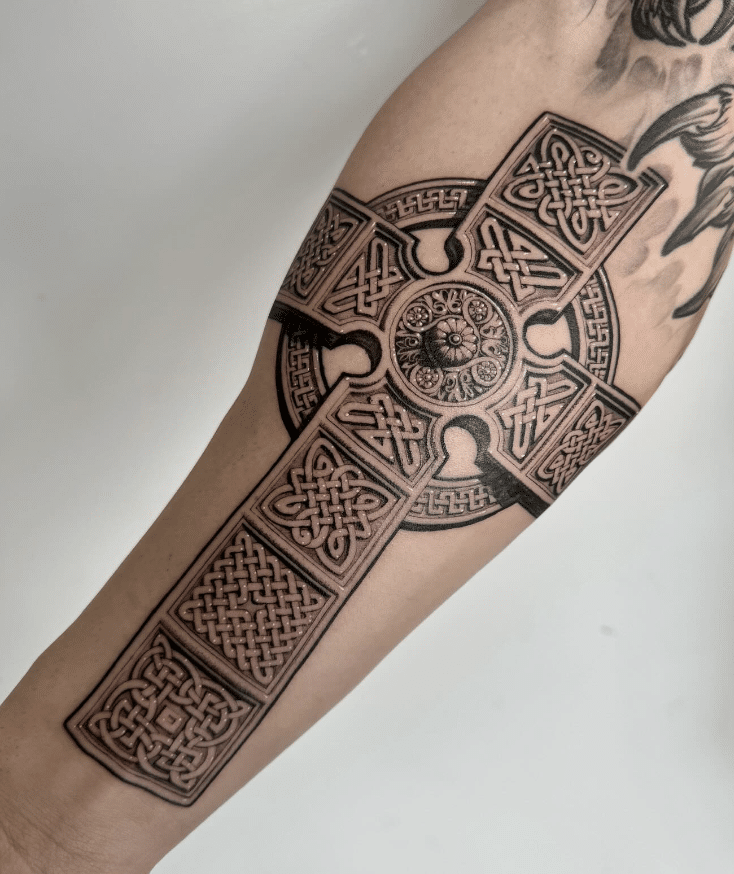
Photo credit: @markvatatattoo
The Celtic Cross is one of the most commonly known of all the Celtic Designs.
While some believe that the cross was used as a means to help convert Pagans to Christianity, evidence suggests that the Celtic cross predates Christianity, with many pre-Christian gravestones made of Celtic crosses found in different parts of Britain.
The Celtic cross is used to represent faith or as a symbol of Irish (sometimes Scottish or Welsh) origins.
Celtic Tree Of Life Tattoo
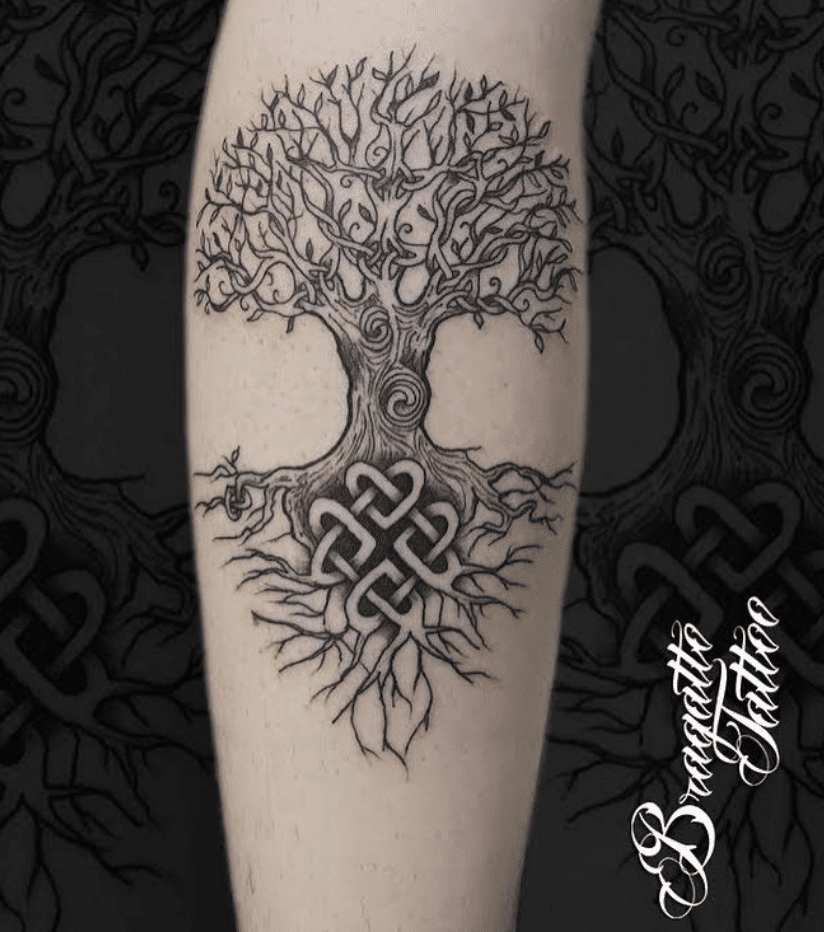
Photo credit: @oldschooltattooltd
While the concept of the Tree of Life is found in many cultures worldwide, the Celtic Tree of Life, or Crann Bethadh is the symbol of all life born on the planet.
The Druids held trees, particularly the oak, in high esteem. Trees were considered sacred, gateways between the worlds, and central to Druidic worship.
Celts often conducted their religious ceremonies in sacred groves, and the layout of these groves could have influenced the conceptualization of the Tree of Life.
Triskellion Tattoo
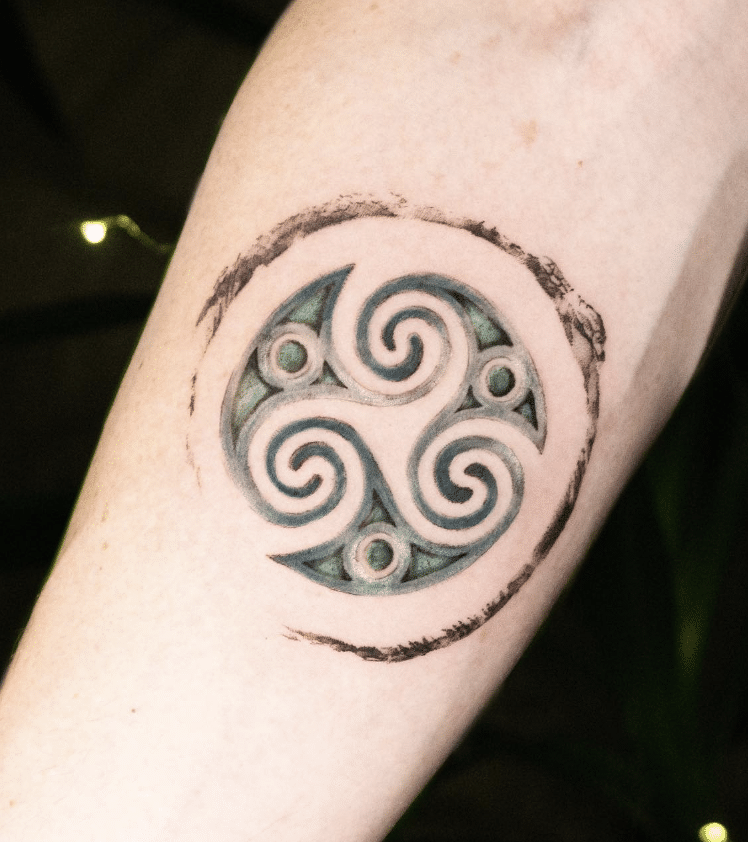
Photo credit: @yallabina_tattoo
The Triskellion is a symbol of three interlocked spirals or three bent human legs.
One of the oldest Celtic symbols, it has been found on several archaeological sites throughout ancient Europe, including the megalithic tomb at Newgrange in Ireland, which dates back to around 3200 BC.
The symbol is a recurring theme in Celtic symbolism that can represent various themes such as body, mind, and spirit — past, present, and future — creation, preservation, and destruction — and land, sea, and sky.
The Triskellion is also a national symbol of the Isle of Man that appears on the island's flag and coat of arms.
Triqerta Tattoo Idea
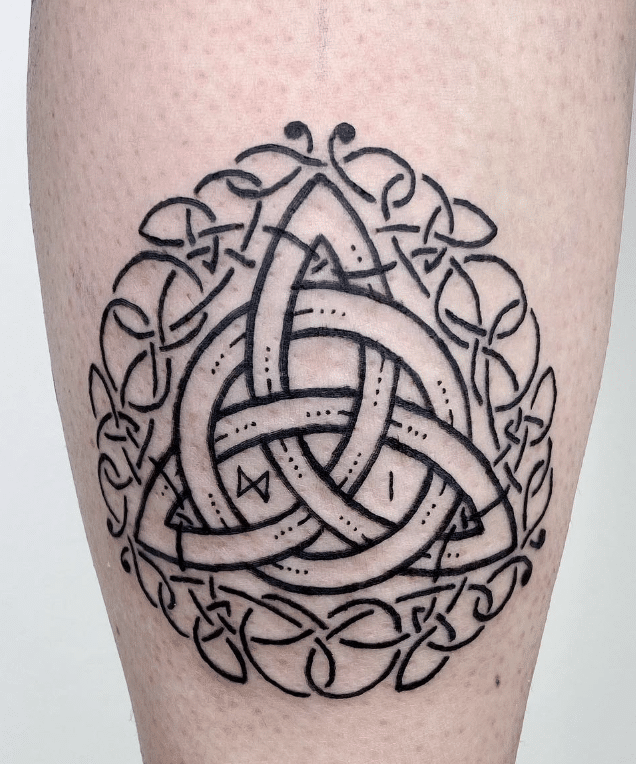
Photo credit: @morrigantattooartist
The Triqerta or Trinity knot is a symbol that features a trio of interlaced arcs or lobes.
Much like the triskelion, the triquetra represents various triadic concepts such as the natural forces—earth, air, and water—or life cycles such as birth, death, and rebirth.
The Awen Tattoo
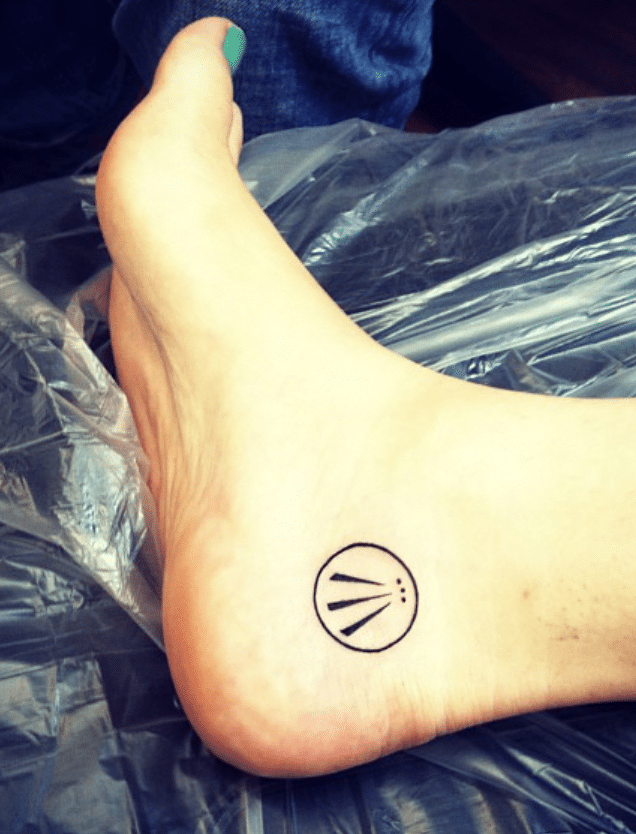
Photo credit: @valerie_tosi
The Awen is one of the lesser-known symbols in neo-Druidry whose creation is attributed to Iolo Morganwg, a Welsh poet of the 18th century.
The two rays on the sides represent male and female energy while the one in the center represents the balance between them.
The word "Awen" itself means "inspiration" or "essence" in the Welsh language, and it is particularly associated with poetic inspiration.
History Of Viking Tattoos
When you think of what Vikings look like, your first thought is probably of large, muscular, heavily tattooed, un-groomed men and women with horned helmets.
Unfortunately, almost all of this is either un-proven or outright false.
While not by much, Vikings were shorter than modern European standards, placed a high value on personal grooming, and were more than vicious warrior types as they were also traders, farmers, and family people.
There is also no historical evidence to suggest they wore horned helmets and most importantly there has never been any evidence found that Vikings actually tattooed themselves.
While there is no archeological or Viking-written evidence that they did adorn themselves in tattoos, there is anecdotal evidence to suggest they did.
Arab traveler Ahmad ibn Fadlan encountered the Rus' (Viking traders along the Volga) in the 10th century and described the Vikings as being covered in dark green (or possibly blue) tattoos from fingernails to the neck, which included various patterns and designs.
However, it is debated as to whether these were in fact tattoos or temporary body art used by a small number of Viking traders and if the Arabic translation of the word “tattoo” is accurate or whether it describes some other form of body decoration.
“I have never seen bodies as nearly perfect as theirs,” he wrote. As tall as palm trees, fair and reddish, they wear neither tunics nor kaftans.
Every man wears a cloak with which he covers half of his body, so that one arm is uncovered.
They carry axes, swords, daggers, and balways have them to hand. They use Frankish swords with broad, ridged blades.” (The account by Ahmad ibn Fadlan)
While there is no proof that Vikings did wear Tattoos, due to the fact that Vikings were known to travel to many places where tattooing has been proven to happen and that the Vikings did adorn themselves in symbols and images through makeup and body paint, it is highly probably that they did have tattoos.
Unfortunately probably not to the extend that you are familiar with from television and films.
Viking Tattoo Designs
While there is no proof that Vikings did, in fact, tattoo themselves, it is known that they held certain symbols dear to their culture.
These symbols were used as motifs in their metalwork, carvings, and jewelry, reflecting their beliefs and values.
Viking Rune Tattoos
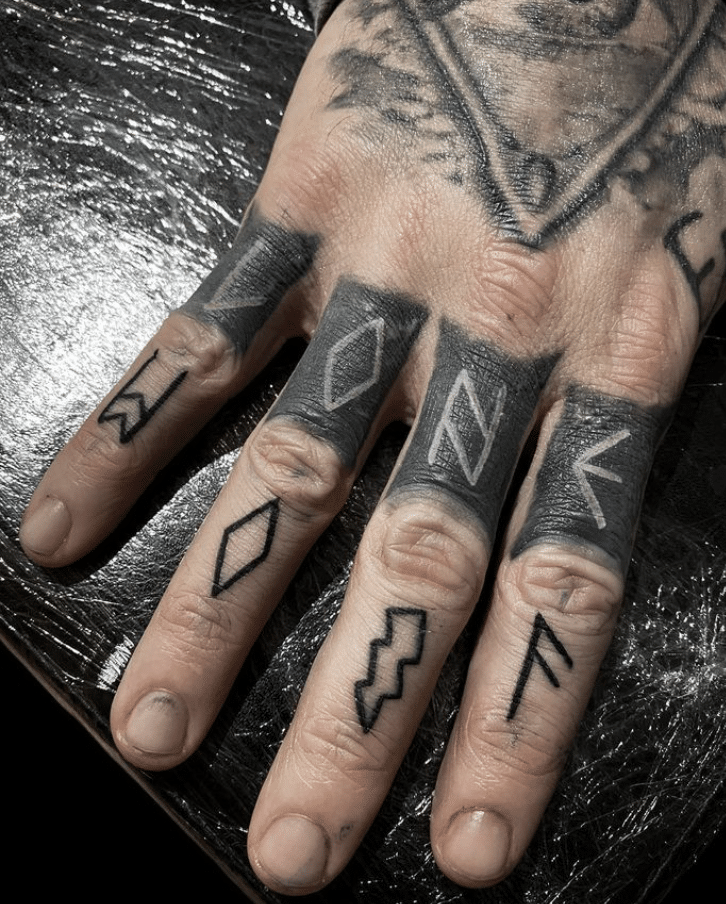
Photo credit: @maxkrumbstattoos
The Vikings believed that runes held magical powers and were used only to convey special, spiritual meanings. Each rune had a specific meaning behind it.
Runes were used to engrave things such as jewelry and shields, and the Vikings believed they would give them protection in battle.
Runes were also believed to be as old as the tree of life Yggdrasil with them being engraved on its trunk.
Yggdrasil Tattoo
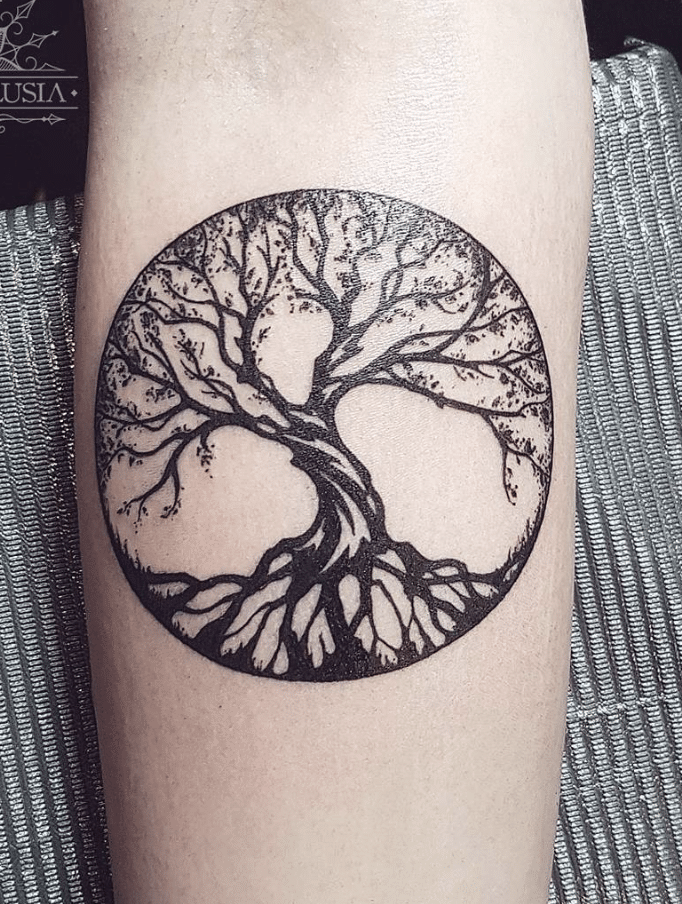
Photo credit: @irene_illusia
Yggdrasil, like the Celtic tree of life, symbolizes all living things in the cosmos.
In Norse mythology, it connects the nine realms, spawning from the well of Urd, symbolizing the creation of life from water.
After Raganrok, it is prophecized that a man and a woman will take shelter beneath Yggdrasil until the battle is over and then repopulate the world again.
Valknut Tattoo
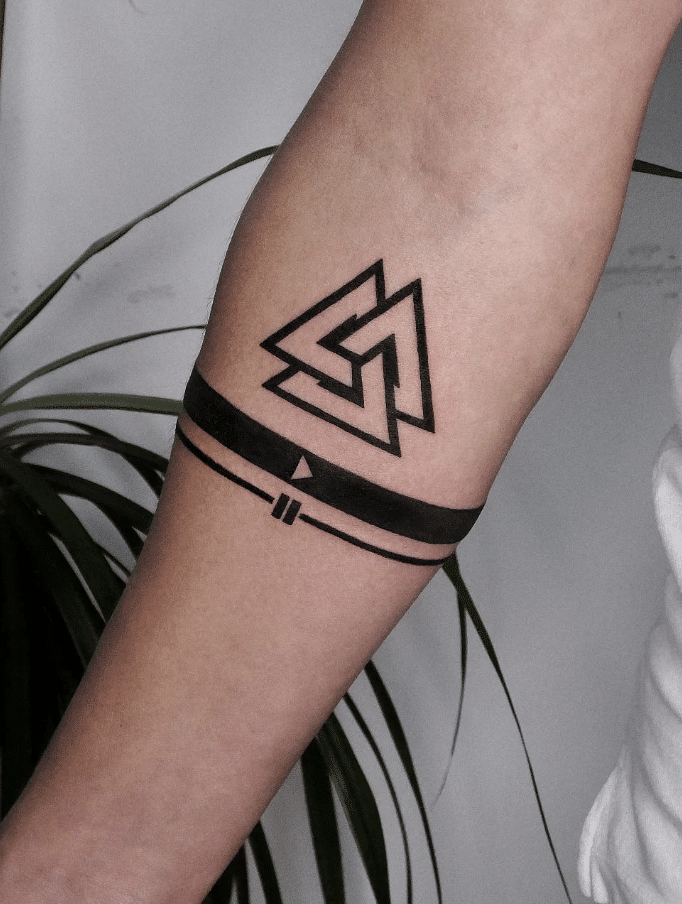
Photo credit: @oztattoom
The Valnut, or Odin's knot, comes from the words var and knut, meaning slain warrior and knot, respectively.
Heros slain in battle would be greeted into Valhalla by Odin himself, so many Viking graves contained figures of Odin with the Valnut engraved next to them.
The Valknut also has nine corners, representing the nine realms of Norse mythology.
Helm of Awe Viking Tattoo
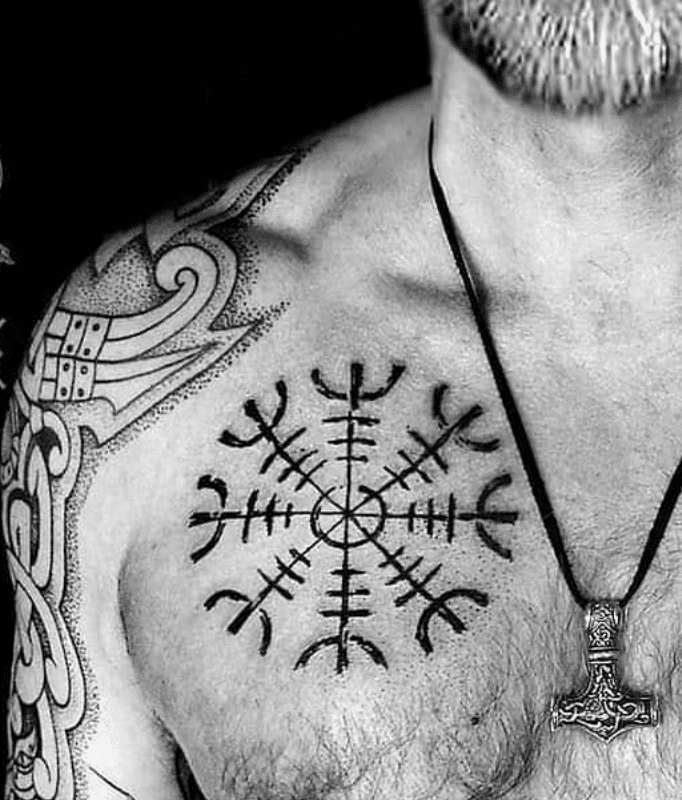
Photo credit: @vikingtattooartist
The Helm of Awe or Ægishjálmur is believed to grant strength and invincibility in battle, often inscribed on armor or weaponry.
The Helm of Awe was also a symbol worn by the Dragon Fáfnir to protect his hoard. It is associated with Fáfnir’s ability to paralyze his prey before striking and is said to give Fáfnir much of his strength and invincibility.
Vegvisir Tattoo
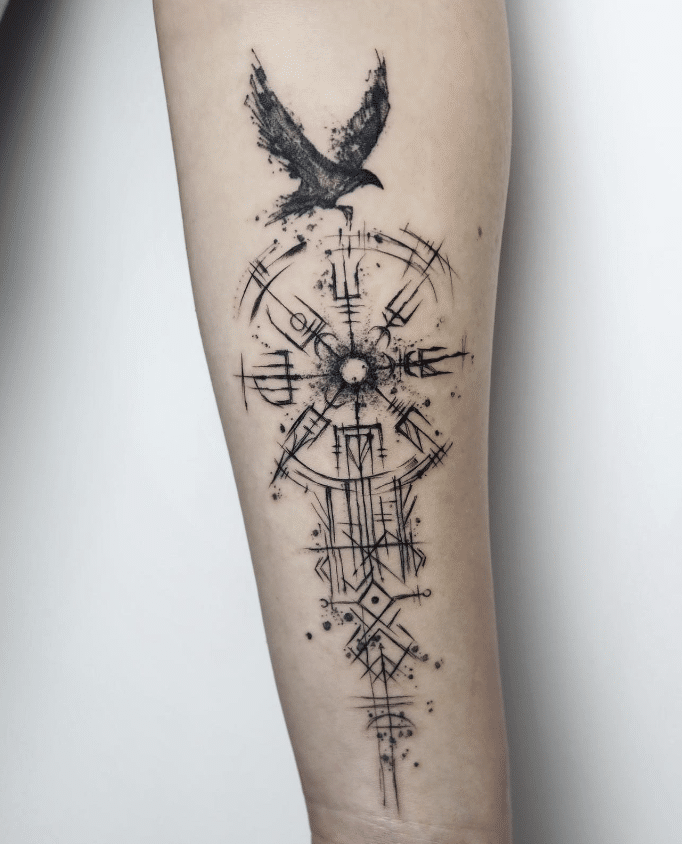
Photo credit: @inkwazja_
The Vegvisir, literally meaning path pointer, was a symbol the Vikings believed would show the right path to anyone who had lost their way.
As the Vikings were a seafaring race who often traveled into the unknown, it should be no surprise that their ships were often adorned with this symbol.
Amazing Celtic and Viking Tattoo Artists
Conclusion
Celtic and Viking tattoos are more than just body art, they carry with them the symbolism of ancient strength, courage, and mysticism.
Be it the complex Celtic knots or bold Viking symbols, these designs can connect the wearer to the legacies of the warriors and mystics.
A Celtic or Viking Tatoo not only decorates the body but also serves as a reminder of our connection to past civilizations, inspiring us to carry their stories forward in a modern expression.
- Trash Polka Tattoo Style - June 25, 2024
- Anime Tattoo Style - June 17, 2024
- Geometric Tattoo Style - June 16, 2024
